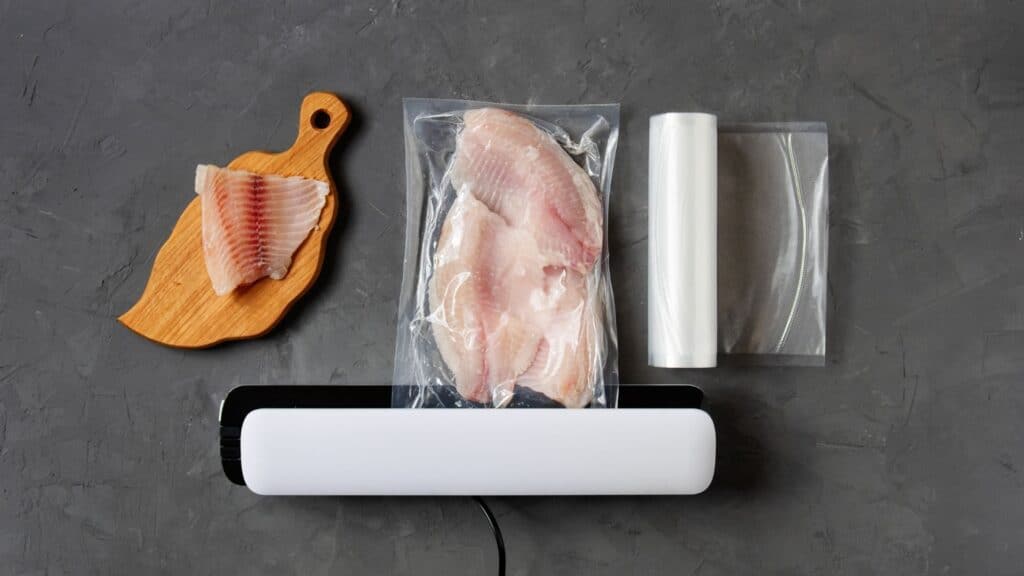Which Deep Pan to Choose for Braising

Last Updated: March 1, 2022
A deep frying pan is necessary for long stews, roasting vegetables and meat, cooking minced meat dishes. A deep frying pan is one of the most important kitchen utensils in your home because you can use it to cook a wide variety of foods. Tasty food does not take much time to cook. There are people who like to spend hours in the kitchen preparing meals. Some people believe that food can only be tasteful through slow cooking and this is true if you want something cooked thoroughly but not burnt.
There are a variety of pans on the market that can satisfy anyone at any time in accordance with their purpose. Deep frying pans vary in size, from moderate to huge, with diverse forms and features. The best thing about deep frying pans is that they can be found in a good price range. There are frying pans of different sizes so you can choose the one that will better fit your needs.
Which Frying Pan Can be Considered Deep
The depth of the pan is determined by the height of the walls. If they are beveled, it is important to measure exactly the height from the bottom to the top plane at right angles. Frying pans with walls of 5 cm or more are considered to be deep. But pans with a depth of 7-8 cm are most in demand.

The height the walls frying pan are not always needed. If this is a pancake maker, then they should be as low as possible — practically absent, so as not to interfere with turning the pancakes with a spatula. Low side walls or no walls at all — is the most preferable option when cooking fried eggs in a frying pan, they should be small and beveled.

But when you want to cook a large piece of meat, fry chicken or steaks, you need a deep frying pan. The fact is that the sides of a frying pan, when heated, create a higher temperature inside the dishes and do not allow the heat to quickly leave the pan. As a result, food is not only cooked faster but also more evenly. When shopping make sure that the walls are thick enough so they can withstand high temperatures and will not warp.

Try frying chopped cutlets or chops in a skillet with high sides. You will notice that they are more tender, there is no sign of raw minced meat on the inside when the crust is fried, and the stove and floor around are clean.

But if depth is desirable for frying, it is mandatory for stewing. Simmer in a deep frying pan so that the liquid does not evaporate very quickly, and the dishes turn out juicy and tasty. If the portion is small, choose a pan with a smaller diameter but greater depth. The most important information to bear in mind is that the simmering process requires patience.
Take your time and don’t let the water evaporate too fast. Otherwise, all the flavors and tenderness of the meat will disappear with it, and you’ll end up with a tough stewed dish that will not be particularly appetizing.

If the pan can be put in the oven, it qualitatively solves the problems of baking. You can cook baked dishes, bake pies, bread and even biscuits. It is important only to use a pan that can withstand high temperatures and is suitable for use in the oven — recommend that you choose one made from cast iron.
There are different types of pans, and each one has its own characteristics. It is best to know them and pick the one that will make the food that you will prepare in your oven have a delicious taste.
Choosing a Pan by Material

The first important thing to consider is the material of the frying pan. The choice of the material for a frying pan is dictated by two main factors: budget and requirements. The material of the base and walls of a frying pan will differ depending on its purpose and manufacturer.
The material is usually steel or aluminum for most household cooking, however some top-quality frying pans are made in other materials such as copper or cast iron. Each of these materials varies slightly in terms of properties such as how much the weight in comparison to other materials, thermal conductivity and cost.
The important factors which affect how well it performs during cooking can be broken down into 4 categories: weight, shape, thickness and surface finish.
Coated Cast Aluminum - The Best Choice
Most of all in stores there are deep cast aluminum pans. They differ in the thickness of the bottom and walls, the presence and type of non-stick coating, and shape. The advantage of aluminum is that it heats up quickly and evenly. Aluminum pans can be divided into two large groups.
Among the pots you will find pans that are cast into aluminum and have a different bottom non-stick coating, and the ones whose bottoms are made of copper and tin. Pretty much every home has some kind of aluminum pan: frying pans, sauté pans, saucepans, pots, roasting pans, cake pans and so on. Aluminum was first used for cooking in ancient times.

The cast aluminum pan is suitable for frying and stewing. Due to the thickness of the bottom wall, the pan heats evenly from all sides and fast. Aluminum has a high thermal conductivity and allows you to heat up the pan quickly. If you decided to buy cast aluminum pans, you should choose a pan that has a thick bottom.
The pan should be heavy and have handles. It is widely used in restaurants. Its size is 23x18x9 cm. It is recommended for family use, as it is convenient in terms of storage and daily use.

An excellent stew is prepared in such a pan. All the juices remain in it and do not evaporate. The stew is tender, juicy, fragrant, delicious. Thick-walled aluminum pans are also ideal for stewing for a long time.
The liquid evaporates more slowly, cools down for a long time, so the languor continues even after the stove is turned off. Aluminum pans are practical. They do not rust and do not absorb food odors, so they are suitable for storing foods with high acidity — tomato sauce.
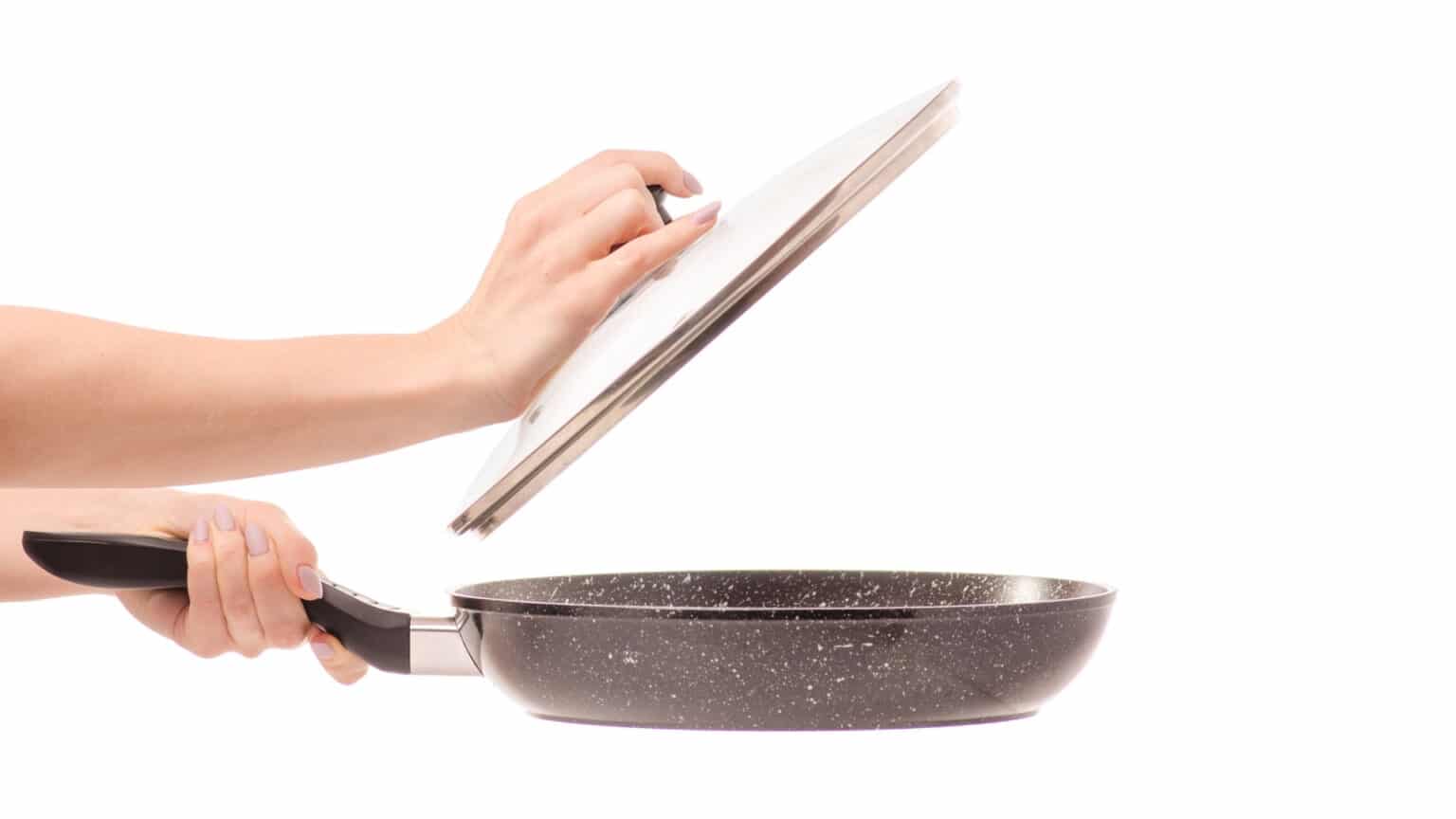
Cooking food on aluminum cookware is a challenge. The biggest problem is food sticking to the aluminum surface and burning. This is because aluminum is porous, so there is no way to stop this from happening. However, with proper preparation, cooking on aluminum can be less of an ordeal. To make cooking easier, it is best to purchase non-stick cookware. They come in different types depending on the composition.
Most Modern:
- Stone — the composition contains mineral chips (marble, granite, etc.), the surface may be slightly rough. Strong enough coating, not afraid of strong heat, without requiring much oil.
- Ceramic — smooth surface, suitable for frying without oil and stewing. It is afraid of scratches and temperature contrast, it requires careful attitude and care.
- Titanium — is a strong and durable coating that is resistant to scratches, abrasion and high temperatures. If the coating is actually with titanium particles, it is not forbidden to use metal devices.

Manufacturers nowadays are trying to make PFOA-free nonstick coatings using a water base. The first thing to consider when selecting a non-stick coating is the quality of the coating itself. It is not only the composition of the non-stick coating that is important, but also its thickness and method of application.
You can only hope for durability if there are several layers. A more reliable method of spraying. There are many non-stick coatings on the market, but only a few have proven themselves to be effective and durable.
Stamped Aluminum - Cheap, But Not Practical
Deep aluminum stamped pans have a slim body. The bottom, as a rule, is also thin — you can only fry something on this that quickly reaches readiness. This pan is not suitable for cooking soup or anything like that. What are these pans suitable for?

First of all, they are used for deep-frying — the thin body heats up quickly.
In a large amount of oil, doughs, vegetables or chicken pieces do not burn and cook quickly due to the high temperature of the boiling fat. The rapid heating of the pan with a small amount of fat makes food crisp and golden.
For example, if you are frying dough, they do not turn out «canoe» or lumpy, but become soft and delicate. In addition, they are often used in Chinese cuisine — to deep-fry duck breasts — their thinness ensures there is no damage to duck meat. In addition, since is thin, it is easy to hold them in your hand.
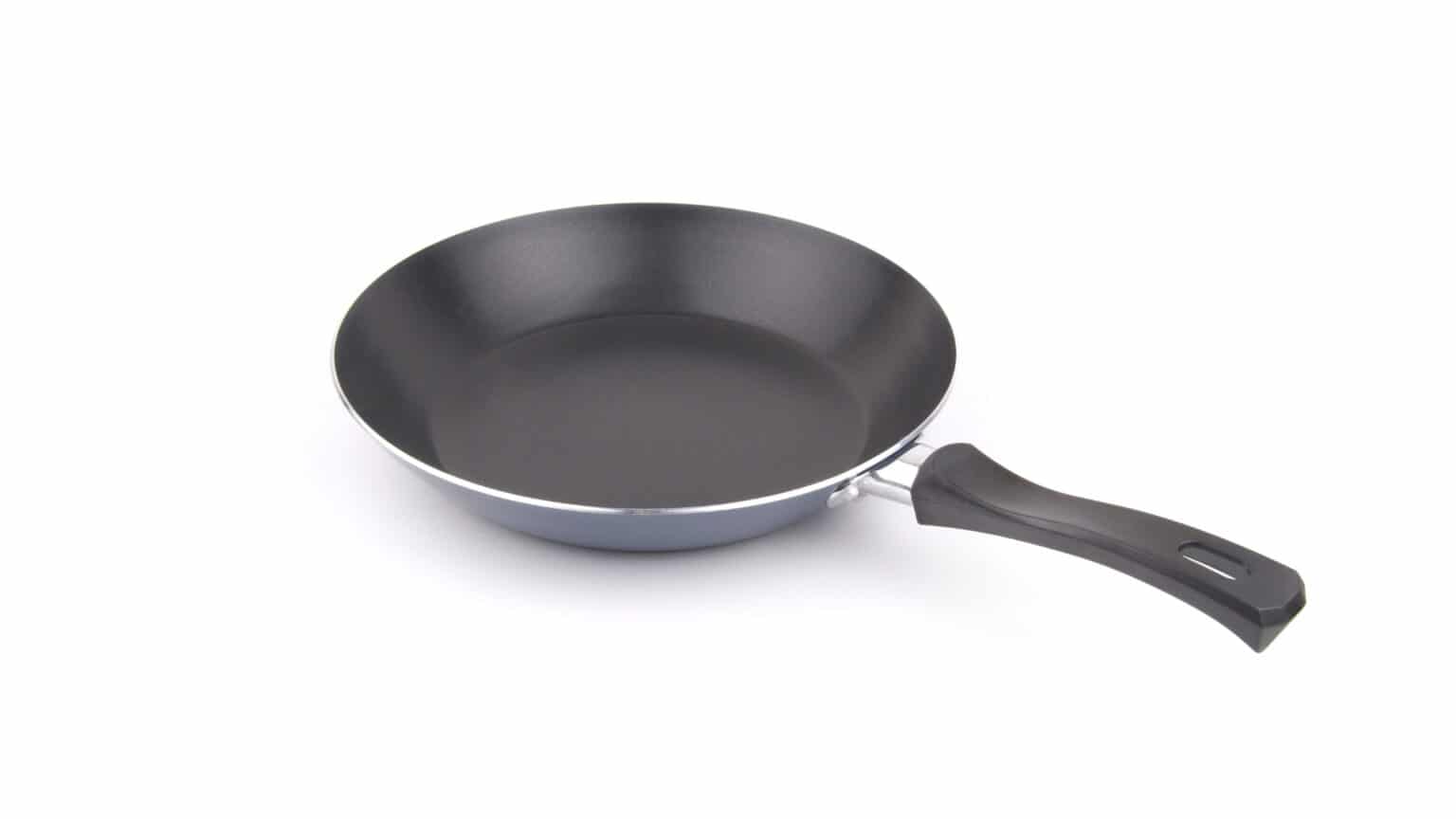
You can also use it for stewing, but here it is important to remember that in a thin deep frying pan, liquids will evaporate faster. There is a risk of getting a dry and even burnt eat. Non-stick spraying is required in such models.

Also, high-sided pans can be used for baking pies, bread, and biscuits. Unless, of course, there are plastic handles and other obstacles to put the mold in the oven.
Cast Iron - Classic and Modern
Traditionally, cast iron cookware is very thick and heavy. It is kind of scary when you think about cooking in cast iron. But cast iron has natural non-stick properties, but they appear only after treatment with oil. The bottom line is that the oil, filling the pores, at high temperatures changes its properties, forming a smooth film. We can say that cast iron cookware is perhaps the most durable cookware in the world.
It has been successfully used in the kitchen for more than two centuries, and is not going out of fashion any times soon. The film formed by oil is called patina. The film provides a natural non-stick coating, which is safe for food and does not leave any flavor or smell.
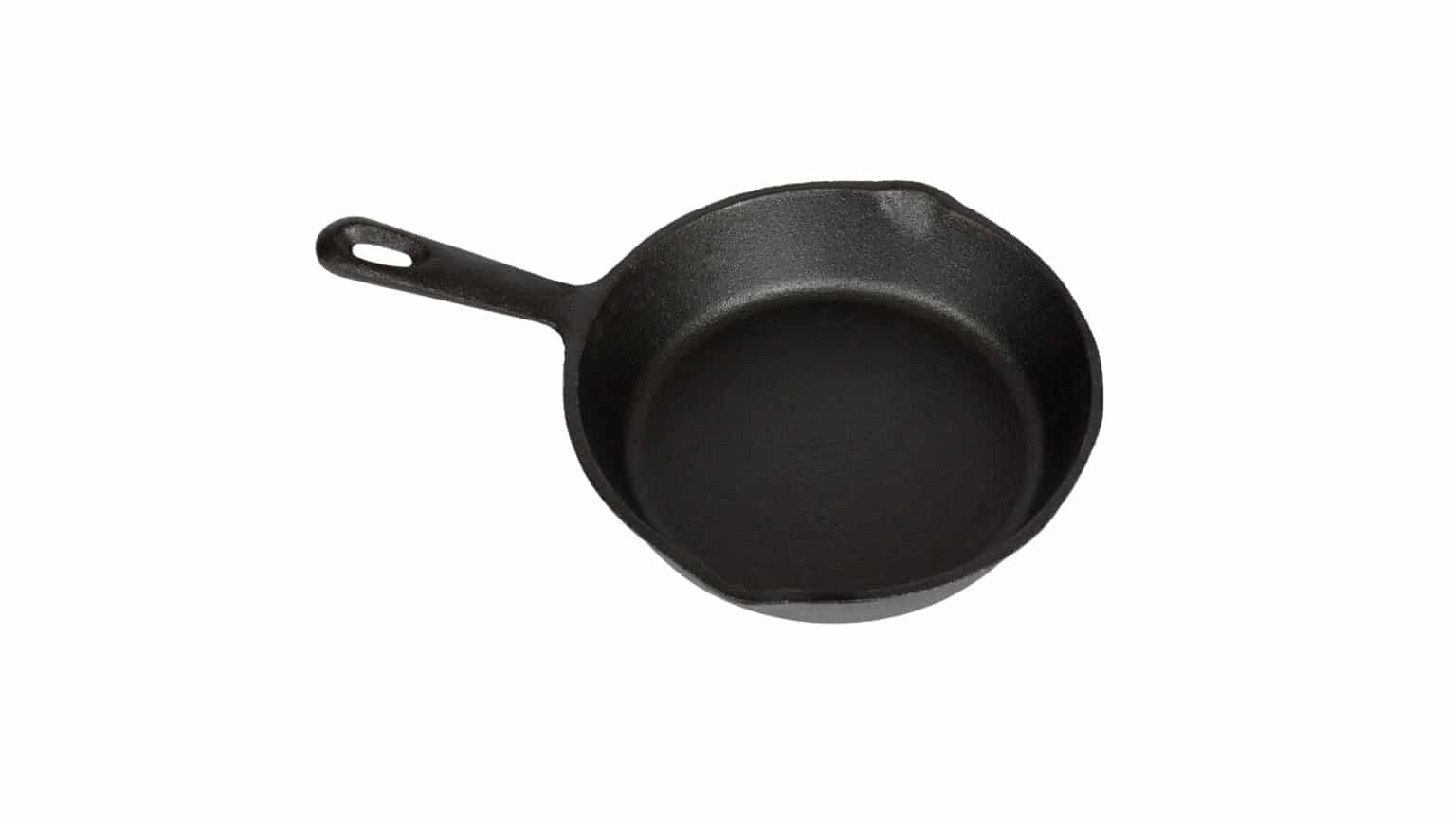
The non-stick properties of cast iron and its ability to be heated to very high temperatures makes it a popular cookware material. What is the best way to give cast iron cookware this property — to create a pan non-stick surface? With the development of gas stovetops, people do not consider cast iron equipment anymore. There are various manufacturers who sell superior cast iron equipment.
But in order to get shiny finish, there is one important thing: natural non-stick coating. If calcination was not carried out at the factory, it will have to be done at home. The advantage of uncoated cast iron cookware is its durability — it can be scratched without fear of ruining it. Serves for decades.
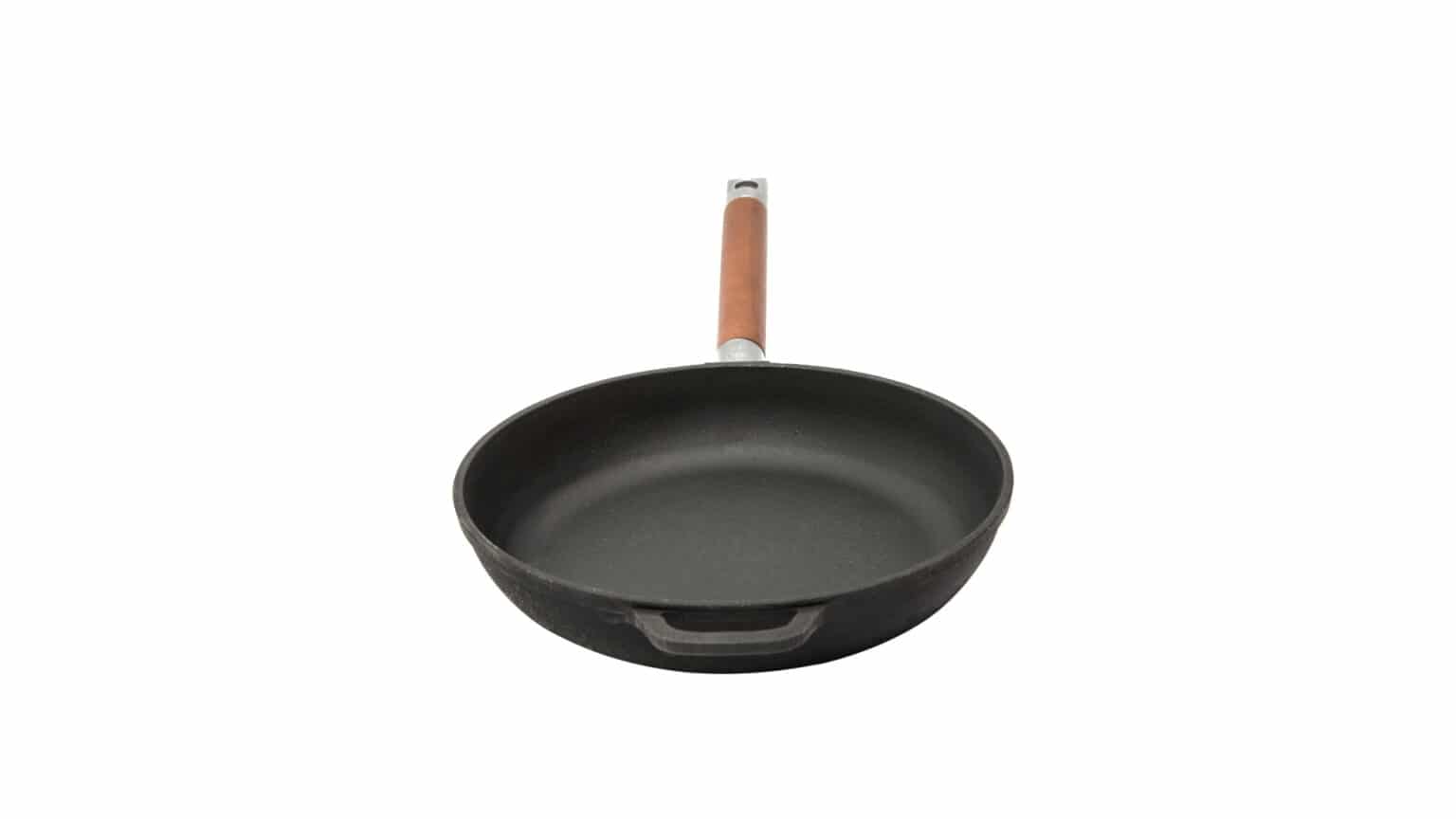
However, it is much more convenient to cook in deep cast iron pans with an inner lining. It is of two types:
- Enamel. Cast iron pans with enamel are suitable for stewing, cooking main courses, cereals, side dishes. Fry on them very carefully and only with fat. The enamel is resistant to high temperatures, is not afraid of acids and does not absorb odors. And it’s easy to clean!
- Non-stick coating. This is the same as described above in the section on cast aluminum. It is better to have a cast iron pan with a high-quality multi-layer stone or titanium coating. If the coating fails quickly, the cost of the frying pan will not be justified.
For What Tasks is Stainless Steel Suitable
Deep stainless steel pans are best for delicate stews. Stainless steel is the most resistant to corrosion and rust. It is ideal for preparing diet meals and delicate fish. Stainless steel frying pans have a very long life expectancy because they are not easily oxidized.
This material was discovered in France more than two centuries ago. The coating applied to the steel protects it from rusting and also helps distribute heat evenly over its surface, thereby providing uniform cooking.

The best quality frying pans are made of 304 grade chrome-nickel food steel. The cheaper ones are made of 18/10 stainless steel. It is important to pay attention to the bottom. It can be single-layer and multi-layer. You need to find out whether the bottom has aluminum or copper discs in it. The bottom is crucial not only for the way it renders heat but also for its durability.
Combining Materials
Progress does not stand still — manufacturers improve the consumer properties of tableware by combining in one product materials with different properties that complement each other. Most often, various metals are combined in the bottom of pans.

The encapsulated pan is a product with several layers. The most popular is an aluminum layer inside, but there may be also copper, stainless steel or nonstick coating. Each of them has its own properties that take into account the properties of the other layers. These interactions lead to increased performance: cooking becomes more even, the product requires less care, there is a reduction in oxidizing reactions.
Criteria for Selecting a Pen
Deep pans for cooking on the stove should have handles for ease of cooking and safety. If a skillet does not have handles, it is less convenient to use and also potentially dangerous. The best pans for the stove have handles that make it easy to lift and move them.
The handles should let you put a pan down without fear of being burned. The handles should be made of materials that are not flimsy or too loose. You don’t want the handle to break before you’ve even had a chance to use the pan. Deep cook pans are more heavy duty than shallow pans, so they should have stronger handles. Handles are of different types:
- Cast — made during the manufacturing process of the housing and is part of it. To avoid heating, several metals are used, alternating them.
- Attached by one of two methods — rivet or screws. The screw fastening of the handle is more reliable.
- Removable — they are fixed with a special fastener on the body. You can find handles made of wood, various plastics, silicone.

It is more convenient to have two handles — one cast, and the second — a long non-heating, preferably removable. One of the most convenient design features you can look for in a pan is a handle that is removable. Typically, pans with this feature have a grip knob on the opposite side of the handle and it makes storage. It also makes it easy to stack your pans in a cabinet or in your pantry.
Attention to The Cover
If you plan to use a deep frying pan for stewing, then it is important that the lid fits snugly against the sides. Otherwise, the liquid will boil away faster, and the dish will not turn out juicy. The best fit is provided by cast covers made of aluminum or cast iron. But you can’t observe the cooking process through cast iron lids when it comes to stewing. You can’t check the water level and the amount of liquid that evaporates so quickly.

Glass lids with a silicone rim fit well. Silicone is not afraid of high temperatures and does not lose elasticity over time. A pot cover made of glass permits you to observe the cooking process. The lid must be a perfect fit with proper ventilation. It is important that each lid fits a particular container. Any gaps between pots and lids must be removed before use. A good lid lets you monitor the cooking process.
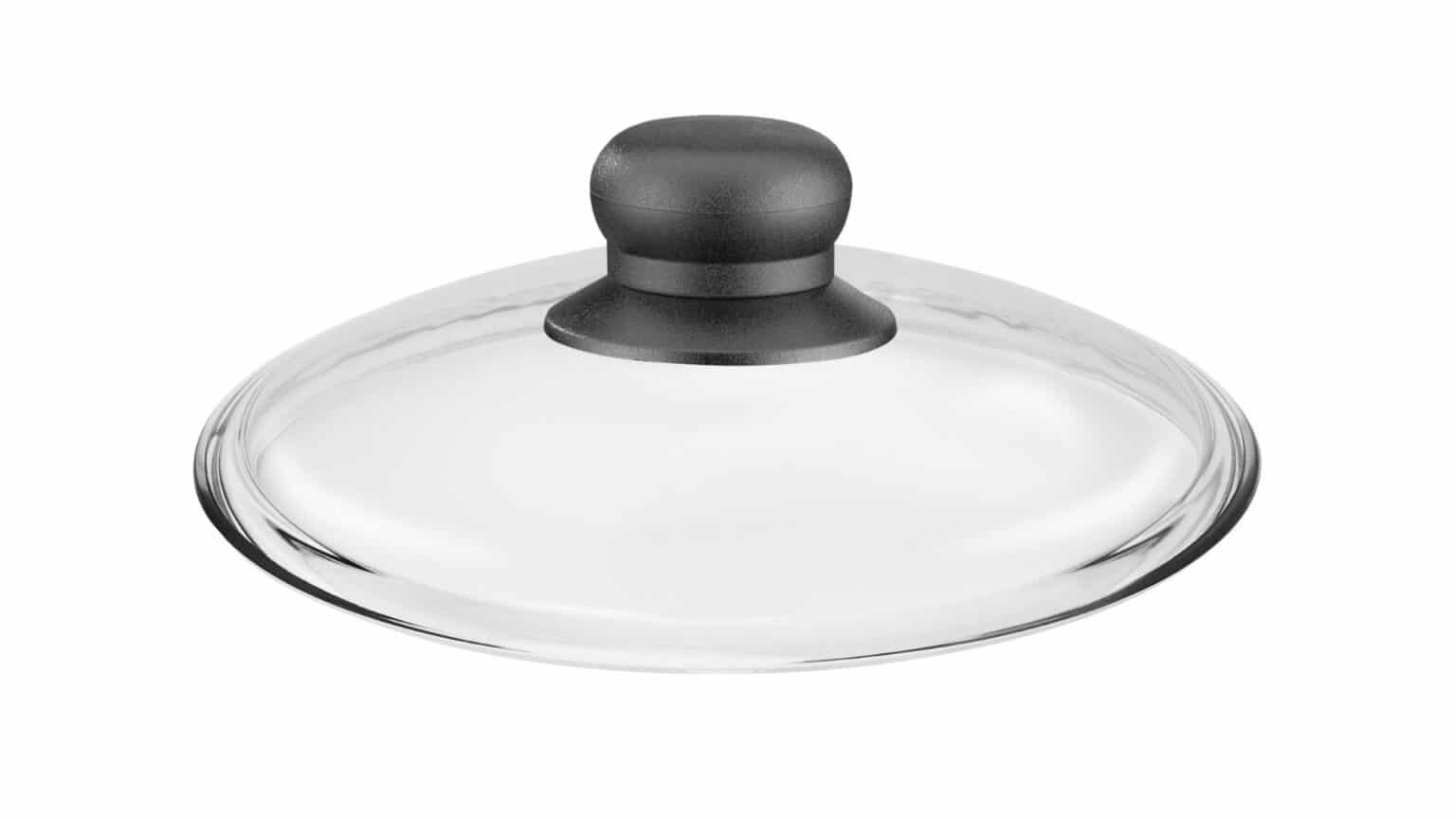
Holes in the lid help drain excess moisture, escaping steam reduces condensation, which is good for frying. This helps prevent your food from getting soggy.
Cooking is considered as one of the most common housewife’s chores. That’s why we must have a deep frying pan if we want to feel elated. By owning such pan, you will be sure that cooking is not a chore anymore but rather an enjoyable activity.
Whether you are more into omelets or bacon and eggs, they all need to be fried in a deep frying pan. Though it might seem simple to use such cooking ware, there are still some things that require your attention and proper care. You must make sure that your deep frying pans will serve you for many years.

Recommended Articles :
Copyright 2024 © Beyond the Embrace
Beyondtheembrace.com is a participant in the Amazon Services LLC Associates Program, an affiliate advertising program designed to provide a means for sites to earn advertising fees by advertising and linking to Amazon.com.



